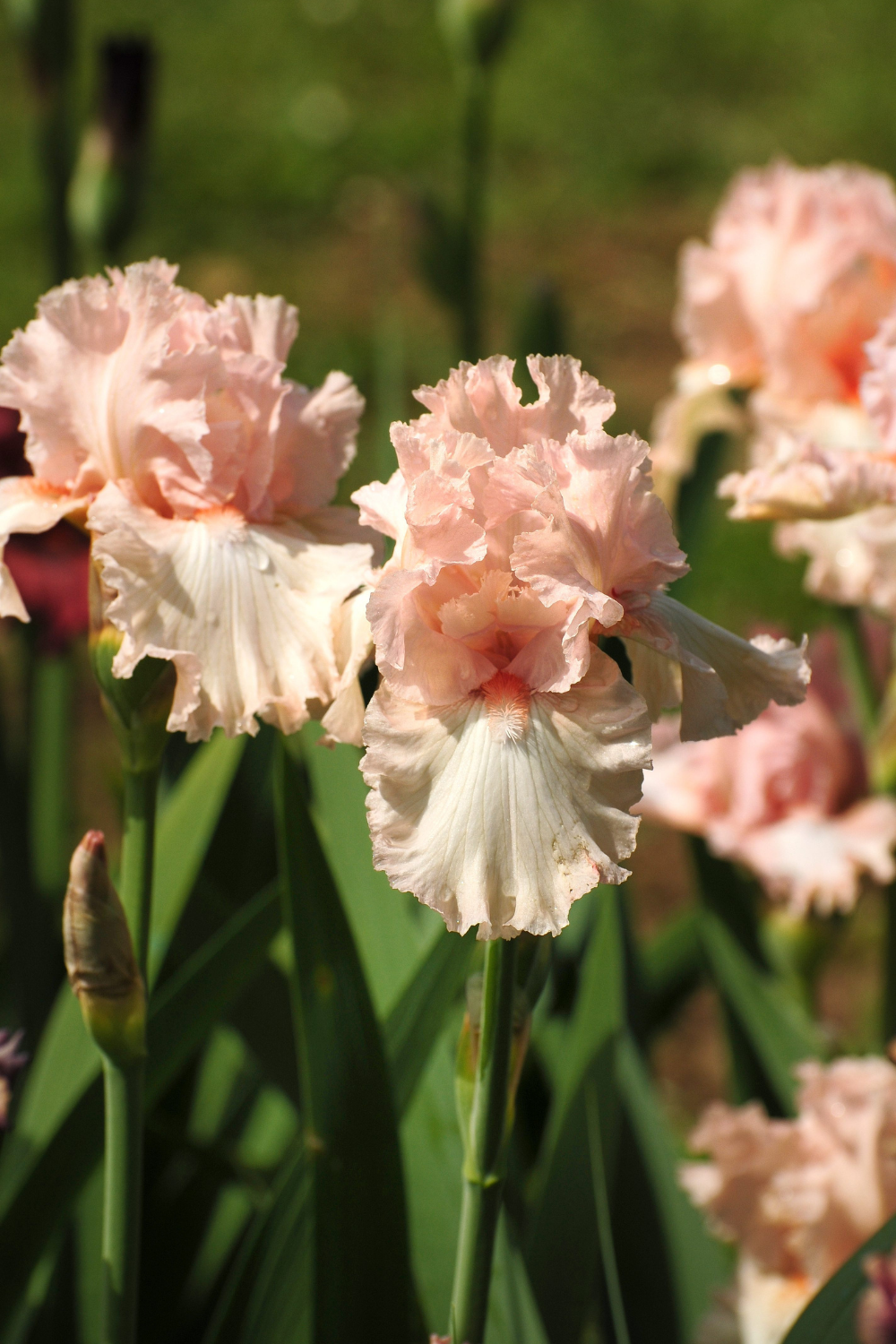I have a lovely iris bed this year. The reason it is so lovely is because, last fall, my son gave me some tubers from his garden, which he had just redone. I added them to my already established bed, knowing I was going to be rewarded by some new colors later. This spring, they came up in full force, waving their lovely heads high above the green foliage, almost shouting for attention. They got it! Then, unfortunately, the rains came and cut short their already fleeting life span. But, though they never last very long, the sight of a group of irises waving in the breeze is definitely worth it.

Irises grow from rhizomes, not blubs or seeds. And, if you have never planted a bed of these graceful flowers, rest assured, they are one of the easiest things to grow and care for!
The best time of year to plant most perennials is actually in the fall. They are dormant on top but spend the winter setting their roots firmly into the soil. Then, when spring comes and they are ready to pop out, they are full of energy. So, even if you have not yet got your tubers firmly placed in the ground, do not despair. Now is the time to plan, locate good plants, prepare the beds, and dream.
First, decide where the bed should be. Irises prefer full sunlight but will tolerate dappled shade. If they do not get enough sunlight, they will grow but will not prosper and bloom well. So, relocate the iris bed, if need be, to full sun.

Secondly, work up the soil. Digging the soil deep and breaking up clods and removing unwanted vegetation will help the rhizomes send out healthy roots with which to gain nutrition and to anchor the plant. You can amend the soil if you think it needs it but remember that irises are not fussy. Don’t over-fertilize and burn them up.
Perhaps the ONE thing irises are fussy about is their feet! They don’t like soggy conditions. Place the new bed where it will have good drainage so the plants will thrive.
Now, spend some time perusing plant catalogs. There are SO many irises to chose from! Pick out a few of your favorites and have fun. For more drama, clump the colors together and plant in groups of at least three.
You might be lucky enough to have a friend or neighbor who is willing to share their plants. Don’t be afraid to ask. A trade can usually be achieved. This is where many of my favorite plants came from!
When it is time to put the iris rhizomes into the soil, space them about 18″ apart, roots down, leaves up and no more than 1″ deep. It is tempting to plant deeper because they sometimes fall over but don’t do it. They will likely rot. They will not survive. (If you have not already done it, cut about half of the length of the leaves off. This keeps the plant from expending too much energy trying to keep the leaves green and can put more effort into establishing roots.)
Place name tags near each grouping and carefully water the plants in. A very thin layer of mulch may be added to cover the soil until the plants are established but it is not necessary.
If you have an old, established bed of irises that seem to have stopped growing or blooming, they probably need to be divided. This is simple, though it may take a little work to dig up a very compacted bed. They grow shallowly but will become compressed from growing together.
Clear off all debris and old leaves from on top of the plants. You will probably notice that iris rhizomes actually live very close to the surface, many of them having exposed tubers. This is okay.
Using a potato fork, lift the rhizomes from the ground. Shake and, perhaps, break them apart. Sort out any tubers that are damaged or rotten and throw them away. Trim off about half of the green leaves. And, Viola! They are ready to share with friends or replant in a new garden expansion.

One of my favorite activities is participating in a plant or seed swap. If the idea of bartering your seeds and plant cuttings with other avid plant growers sends your heart aflutter, I recommend you look around and find a group that shares your interests. The local county extension office can help with that, as well as social media. There are groups for every interest. Your garden will grow with all the new plants, you will gain expertise from sharing information with other experts and you will make some new friends. That sounds like a winning plan to me!
Happy gardening!![]()

You can read more about my irises here: